
- For 2-6 players
- Develops critical skills
- Developed by educators

- For 3-12 players
- Perfect For family
- Education insights
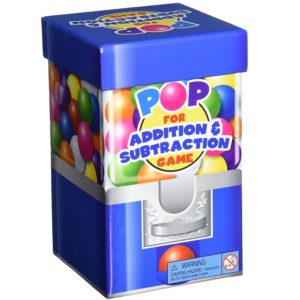
- Ages 6+
- Two levels of play
- Includes 90 math-fact cards
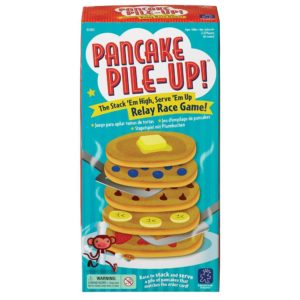
- For 2-12 players
- Easy to play
- Develops gross motor skills
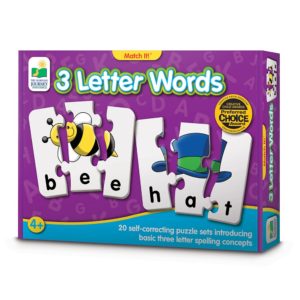
- Ages 4+
- Ideal preparation for school
- Develops gross motor skills
Choose the Best Board Game for 6 Year Olds
Customer’s Choice: the Best Rated Board Games for 6 Year Olds
144 users answered this survey. Please help us improve this review!
Second of all, it’s great bonding time that you won’t always get while doing other activities like watching television or playing video games separately.
Another benefit is building important social skills such as taking turns in this interactive way instead of fighting over the remote control during commercials breaks! It may also help them learn math concepts like counting coins or solving logic problems they previously have not encountered before.
Board games are a great way for children to have fun and learn. With the many new board games on the market, it can be hard to find quality ones that are appropriate for 6-year-olds. This article will help you by giving you some tips and reviews of some of the best board games available today!
Table of Contents
ThinkFun Zingo Sight Words Game – the Editor’s choice!
 Zingo Sight Words Game is a fast-paced word and game bingo that’s fun for children and adults of all ages. ThinkFun Games educates as it entertains (a rare feat!), teaching essential skills with a zing!
Zingo Sight Words Game is a fast-paced word and game bingo that’s fun for children and adults of all ages. ThinkFun Games educates as it entertains (a rare feat!), teaching essential skills with a zing!
You’ll work on reading skills, shape recognition, color awareness, turn-taking, counting – even while you’re having the time of your life.
Zingo Sight Words Game comes with double-sided cards plus instructions – 25 words for 3 players or teams.
ThinkFun’s Zingo Sight Words game is starting to become essential in classrooms and at home. It challenges children to recognize printed words by matching them with images on the board, bingo-style. The game builds skills that are important for lifelong reading success, and it makes a fantastic gift!
Educational Insights Blurt! Word Game – the best for building vocabulary!
 Blurt! is a word game that challenges the kid’s vocabulary in an exciting and competitive way. The goal is to be the first one to “blurt” out the correct answer for whatever was said, which makes this educational, too! Challenge your friends or family to see who can play for the longest without blowing their vocab – who knows what you’ll learn?
Blurt! is a word game that challenges the kid’s vocabulary in an exciting and competitive way. The goal is to be the first one to “blurt” out the correct answer for whatever was said, which makes this educational, too! Challenge your friends or family to see who can play for the longest without blowing their vocab – who knows what you’ll learn?
The game includes all of its pieces: 6 playing pieces, 200 cards (1200 clues!), 6 dice, and even enough space on the board for junior players as well. If you’re looking for a new way to take trips down memory lane while expanding the vocabulary skills of your kid at the same time, look no further than Blurt!
The game of Blurt! is the perfect way to build vocabulary and brainpower. The cards are full of engaging, creative clues that make it a riot for all ages.
Pop for Addition & Subtraction Game – the best for developing math skills!
 Addition and subtraction become fun with this creative game. Colorful pieces make it easy to learn both basic addition and subtraction facts, while the fast-paced spinning variation helps create multiplication skills too.
Addition and subtraction become fun with this creative game. Colorful pieces make it easy to learn both basic addition and subtraction facts, while the fast-paced spinning variation helps create multiplication skills too.
With 90 math-fact cards, 10 pop cards for rewards, a spinner guide on the box lid, 2 levels of play for less experienced players, or 4 player variations provides a truly exciting way to practice math – perfect from first-graders and beyond. Kids will want this one game more than once!
The game can be used as an educational tool in addition what makes it even better is that all rules are printed right on the side of the box with instructions also found online.
The Pop for Addition & Subdue Game will make practicing math fun and engaging. Get your kids to practice their addition, subtraction, and increase fluency skills with fast-paced game play. Kids earn gumballs when they answer correctly or can’t wait to spin the numbers!
Educational Insights Pancake Pile-Up – the best for developing logical skills!
 Let the kid stack up pancakes and butter in this family-friendly game that begins at home and then goes anywhere! This preschool brain buster helps develop gross motor skills, balance, coordination, set following skills – no reading required and it’s so much fun.
Let the kid stack up pancakes and butter in this family-friendly game that begins at home and then goes anywhere! This preschool brain buster helps develop gross motor skills, balance, coordination, set following skills – no reading required and it’s so much fun.
When children learn to follow the sequence and work on matching their pancakes by flavor you can be rest assured that stacking them will be easy as pie.
Educational Insights has put together 10 pancakes in 5 flavors for an ultimate learning experience. And no reading required! The pancake game board is attached under the box that makes it easy to bring this creative set around with you anywhere!
Pancake Pile-Up from Educational Insights is a preschool sequence game perfect for the classroom or learning space. Kids learn to follow a sequence and develop gross motor skills, balance, and coordination – all while competing with other kids!
The Learning Journey: Spelling Puzzles – the best for developing reading skills!
 The Learning Journey: Spelling Puzzles is a bright learning aid with a focus on developing early reading skills. The sturdy, colorful cards have been designed to teach sight words and CVC (consonant, vowel, consonant) words that children typically encounter at school; strengthening their concentration skills and building focus in the process.
The Learning Journey: Spelling Puzzles is a bright learning aid with a focus on developing early reading skills. The sturdy, colorful cards have been designed to teach sight words and CVC (consonant, vowel, consonant) words that children typically encounter at school; strengthening their concentration skills and building focus in the process.
Each puzzle comes in three pieces and has an engaging picture of an object associated with each word. A perfect introduction to education for children ages 4+, this set of 20 puzzles will help your child become self-referential learners as they read new words and objects aloud, identify them through initial letter sound clues, spell them out using finger rhymes or drawings for sequencing strategy practice!
The Learning Journey’s learning puzzle series has been designed to help children fine-tune their concentration and focus skills, while also teaching the early reading skills they are beginning to learn.
The Buyer’s Guide
Things to consider when buying board games for preschoolers:
1) Age appropriateness
Not all board games are suited for every age group. For example, young kids will probably enjoy playing Candy Land or Snakes & Ladders.
But don’t forget that they are still in the process of growing up. Thus, it is best to find games that allow them to practice their skills and learn from each game.
For example, memory games can help with early-age development while board games that teach addition or subtraction would be better choices for slightly older kids.
2) Ease of play
One of the many things we love about board games is that they can be enjoyed by all ages, especially those that are designed for young kids or preschoolers. Thus, your choices won’t be limited to just action-packed video games or puzzles with a bit too much detail.
You should consider if the game is easy enough for kids of a certain age group. However, you also shouldn’t overestimate their abilities and choose something which is too simple either. Instead, try to strike a balance between these 2 factors so you’re sure they will enjoy whatever game you end up picking out for them.
3) Number and type of players
Your family consists of more than just your child does. And the best part is, most board games are perfect for both solo players and groups of different sizes!
While this may not be a deciding factor when choosing a game, it can make playing more enjoyable if you’re able to include everyone in the family. Whether you’re looking for a game that can be played between two individuals or an action-packed adventure that requires teamwork, there’s sure to be something out there for everyone in your household.
4) Rules and content
The more complicated a board game is, the harder it will be for preschoolers to understand. Thus, you should choose something that makes sense and doesn’t require too much thought process or strategy. Also consider whether it has enough content (e.g., number of spaces on a board, number of cards needed for certain games etc.) for them to keep playing it over and over again without getting bored easily.
Meanwhile, if you have kids who are slightly older than preschool age but not yet school-aged, they can probably start learning some new skills while playing board games designed for their age group.
What games are good for 6-year-olds?
Board games are considered a great way to help kids learn while having fun. For 6-year-old children, the board games teach them basic math and how to interact with others in either cooperative or competitive ways. Games that emphasize turn-taking, counting, color matching and taking turns are all good choices.
Main categories of games can be great for 6-year-olds:
1) Games that emphasize turn-taking and strategic thinking:
- Blokus. In this game players try to fit their 21 pieces on the board, but each piece has to touch corner-to-corner with at least one other piece of the same color. The twist is that you can’t place a piece so it touches more than one other of your own pieces;
- Jungle Speed. A card game where each player tries to grab a totem before anyone else does by correctly answering questions such as “Do they have an anaconda or a monkey in their hand?” If everyone answers correctly you move closer to grabbing the totem; if no one grabbed it yet you have to say “pass”, and other players can steal it if they grab it before you do;
- Go Wild. This cooperative game has all players working together to help animals cross the board before a monkey tries to capture them. Players roll dice and work together using cards with numbers on them. The number shown tells how many spaces an animal moves. The twist is that some animals move differently – they swim or fly;
2) Games that emphasize turn-taking and strategic thinking:
- Oregon Trail. This game recreates the classic computer game where players draw random events from a hat that could either help or hinder them along their journey. You have to decide how many supplies (which give points) you want for your trip as well as how much food (which gives distance). The twist? Players can use cards from their hand as money if they play them face down; but if they look at them, then they can’t play any more cards. Whoever makes it to Oregon with the most points wins;
- Route 66. Players travel along this famous highway trying to get their pieces as far down the road as possible; but in order to buy gas and other things, you need money, which is where the game gets tricky. You have a limited number of turns and must make every one count by strategizing your actions from turn-to-turn. The winner is the player who travels all 66 spaces first;
3) Games that involve rolling dice or drawing cards:
- Sneaky Snacky Squirrel. Players roll a die each turn to see which nut they can grab; but players have different colored squirrels (and hands) which correspond with matching nuts so you have to time it right by grabbing a nut your opponent just passed over;
- Simsalabim. This game plays like paper rock scissors since the symbols on each card can either beat, be beaten by, or have no effect on another. Players take turns drawing cards until one player wins 3 of a kind; but if you get too many “no effect” results in a row, then you lose;
- Loaded Questions. This game uses questions to determine who has the advantage and it’s played using 1-minute sand timers so players don’t have much time to think about their answers. There are four rounds with different topics each and the winner is the person whose opponent guesses more keywords correctly;
4) Games that resemble popular classic board games:
- Ticket to Ride. In this game, players collect cards of different colors which correspond with specific train routes on the board. The longer the route, the more points it’s worth so you have to decide whether or not you want a shorter route that will score fewer points but get you closer to your goal;
- TransAmerica. This popular road-building game is similar to Monopoly in that it has a mix of luck and strategy elements; plus players can buy properties from other players if they run out of their own or use them as collateral. The last player with money wins! Games that require kids to think strategically;
- Ticket to Ride. Players collect cards of different colors which correspond with specific train routes on the board; but players also try to block other opponents from going the route they want since every section has only 2-3 spots for trains. Whoever makes it end-to-end first wins;
How do you entertain a 6-year-old?
It is perhaps a question that haunts every parent of a 6-year-old child, especially after they have attended an entire birthday party without providing the expected level of entertainment. In case you are also searching for answers to this problem then read on further.
One way to look at it is to ask yourself how would you make your favorite game interesting for a 6-year-old? If you can successfully incorporate the features that will enable you to accomplish this feat, then there’s no stopping you from entertaining any 6-year-old. Let us explore what are those features:
- Retro feel. There is nothing like going back in time and reliving some memories associated with childhood games such as “hide and seek” or “dodge ball”. Indeed, it is not necessary that you play the exact same game as your 6-year-old child has already mastered them. So, all you need to do is just refresh those memories and make them interesting with modern twists like adding some graphics or music from a famous game so that he gets excited about playing again;
- Trivia and questions. Older children love showing off their knowledge in front of their friends while younger ones would certainly enjoy answering trivia questions and winning stuffed toys at fairs. Ask your 6-year-old certain questions which they might answer incorrectly but then help him/her to learn something new. You can also ask them such questions when they are around other to test how much they know;
- Rainy days are fun. On a rainy day when your 6-year-old child is at home with nothing to do, you can consider playing certain easy games, which are both entertaining and educational. You must be patient enough to guide them through the game and help them understand how it works since some of those games might prove too difficult for a 6-year-old. As they get older, the complexity would gradually increase thereby making it easier for them to play such games on their own and even master some tricks that makes the gameplay even more interesting. If they win prizes also along with learning something new then it’s a bonus;
- Organized sports events. Once in a while you should plan out certain family outings where you all can participate in organized sports events like football, volleyball and so on. People of all ages love playing such games and moreover if your 6 year old child or toddler wins a prize for his/her performance then it would be a priceless memory for them to cherish forever;
FAQ
What age is Zingo for?
Zingo is a fun, fast-paced game for 2 to 4 players age 7+. It’s intended for kids 3+ because there are small pieces (the marbles).
How do you play the game Zingo?
Zingo is a Bingo-type game that can be played with at least 2 players and 3 boards. Each board has 5 zigzag lines of five squares each. Each line, except the middle one, is marked with a different letter of the alphabet. The center square is marked with a picture or character that serves as a wild card.
There are two kinds of Zingo cards: single player and multiplayer. Single player cards have blue backs while multi-player cards have red backs. Both types have 25 squares (5 x 5) on them that will be filled up randomly by 1 to 10 characters/pictures drawn from a hat or bag before play begins.
The game is similar to Bingo, with 2 key differences:
- Each player has their bingo card and calls out the letters in which they have filled up one row (horizontal, vertical or diagonal);
- If a called letter appears on another player’s card it does not matter; both players can mark off that square. So long as it appears anywhere on their card;
How do you play the game Blurt?
In Blurt, 2 teams of players take turns giving clues that will help their team guess a word. If your team guesses the word, you are giving clues to your opponents, then you win.
Each card in Blurt tells you how many words there are, whether or not those words have a negative association, and what category the word belongs to. The colors of each card also tell you who is playing against – red cards are played by 1 team; blue cards by the other. You win if your team guesses all of their words before their opponents try to guess theirs!
How do you play Pop for Addition & Subtraction Game?
Here is what you should do:
- Using counters, coins or sticks (depend on the number of players), each player choose a die and put it in front of them;
- Roll all 6 dice to see who rolls the highest number. Winner takes all six dice and place it in front of him/herself like this;
- The winner begins by taking any two dice from his/her stack and roll again to find the sum with 2 selected dice;
- Again, once you have rolled out your sum, place one die from your stack on top of another as we have shown above;
- And so on , proceed with step 4 until both you and your opponent has only 1 die left each;
- The player with the most number of dice at the end wins;
How to play Pancake Pile Up?
The board game Pancake Pile Up! is a solo game (with the same player mode) about building stacks of delicious pancakes and trying to make them as high as possible. The box contains 36 ingredients, 4 frying pans and 1 spatula. Each frying pan can hold 5 pancakes, so you need to stack up 20 pancakes in each turn. You are trying to score points by building the tallest pancake tower. As all the ingredients are not equal in size, it becomes more challenging when putting different sized pancakes together.
The bigger your tower gets, the higher your chances for bricking it become! By default, there is no limit on how tall you can build your towers, but if you want they may add height limits to the game (for example by using a number of pancakes from each ingredient needed to build the tower). It would also be nice if there were some limit on how many times you can restart your tower per turn.
If you want, Pancake Pile Up! may come with an updated ruleset and tokens instead of ingredients that take space at higher stacks.
How to play the 3 Letter Words game?
This is a trivia board game. 2 to 4 players who play in turns and the player with the highest score wins. At the start of each turn, either one selects two tiles from their hand by choice or by drawing randomly (it does not matter which!). The first drawn tile must be placed into an empty spot on the board if possible. After this, one has to place the second drawn tile next to at least three other tiles (connecting horizontally, vertically or diagonally).
If these four tiles form a word, they all get “seeded” 1 point! This means that should another player successfully use any of those letters in following turns, he/she will receive additional points for it. The more words seeded with one set of tiles, the higher the risk that another player will be able to earn points with it!
So do you need to find an interesting and entertaining board game for 6-year-olds? Board games should help develop observation, systematic and logical thinking. It is extremely important for the kids who‘ve recently become elementary school students. Psychologists and teachers agree that children learn the world best by playing. That is why there are a large number of games for children of different age groups.
Why do you need to buy the best board games for the kids over 6 years old?
Children of this age actively explore the world around them, which is no longer limited to the family and the closest ones. During this period, children get to know their own interests and they are interested in everything around them. 6-year-old kids are actively learning, remembering new things much faster and learning theoretical thinking.
Board games are a more interesting type of entertainment for kids compared to the usual toys and virtual games. When playing board games, children have to interact with other participants. Children at this age are equally interesting to play board games with other children, and with adult family members – parents, older siblings, grandparents.
Jenga-Game picked 5 best board games for 6-year-olds:
- Zingo is awesome for 2-6 players, the game helps to develop critical and social skills;
- Blurt! Contains educational insights, it is perfect for family gaming nights and 3-12 players;
- Pop is good for the team where the players are aged over 6 years. It includes 90 math-fact cards and 2 levels of play;
- Pancake Pile-Up! Game is extremely easy to play, for 2-12 team members. It helps to develop gross motor skills;
- 3 Letter Words game is good for the players aged over 4 years old. It is ideal for preschool children;
Pros of the best board games for 6-year-olds:
In addition to the fact that board games help children develop social skills, they bring many benefits to other areas of child development. First of all, there are a lot of educational board games that help little kids to master such useful skills:
- Spelling and writing skills;
- Basics of English;
- Fast reading;
- Math basics – multiplication and division;
In short, such games are a great help in preparing your child for school. But, besides, board games are also useful for other reasons:
- A child learns to lose. Do not be capricious, do not throw what did not work the first time, to rejoice for the other participants in the game who were able to win;
- These titles can teach you how to plan your actions. They are great for the development of strategic thinking, the ability to think through their steps and draw conclusions in case of a wrong strategy;
- These products help to develop the ability to focus on one thing, which is exactly what to bring up in a child during this period of life;
Did you like my review on Jenga-Game.Com? If you have something to add to this review, offer some titles for 6-year-old kids, please share in the comments. Feel free to ask any questions.
Video Tutorial: Blurt Board Game
Final thoughts
The board games the experts have reviewed are perfect for 6-year-olds. Browse the list and then go shopping! Hopefully, you enjoy this article on the best board games available today. If you know of any other great, quality board games that deserve to be featured here, please let us know in the comments below.

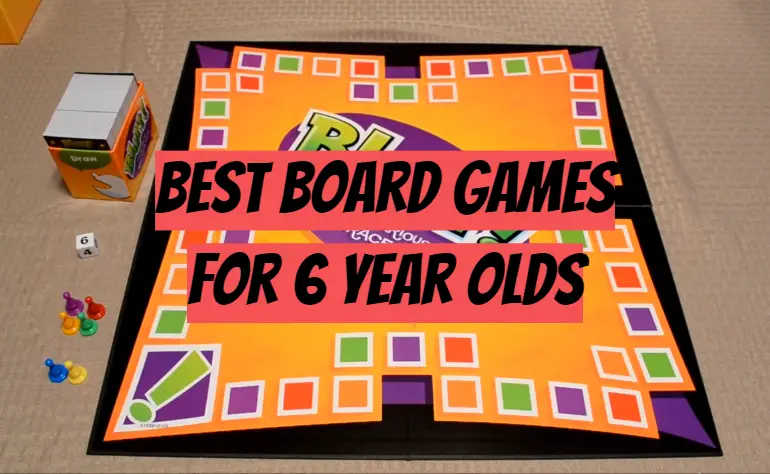
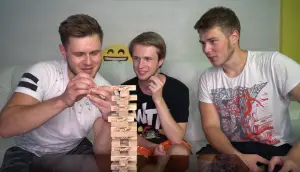
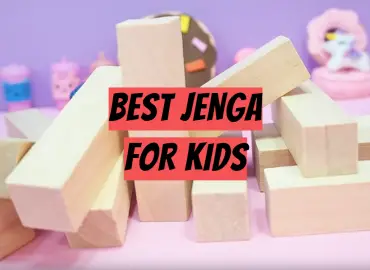
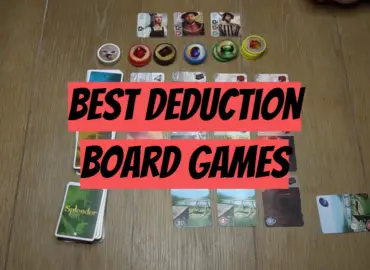
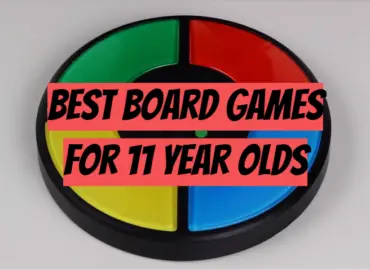

Great job of rounding up all of these games. I haven’t heard of most of these so they will definitely be fun to play. I love engaging with my kids via different games and I’m sure they’ll love these suggestions. Thanks!